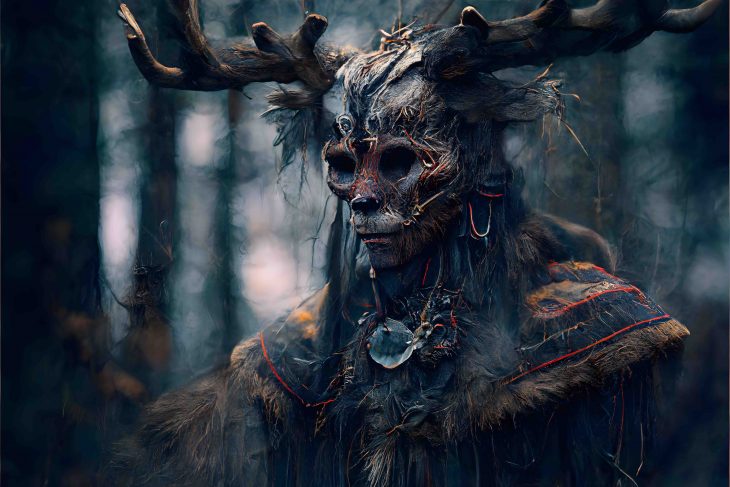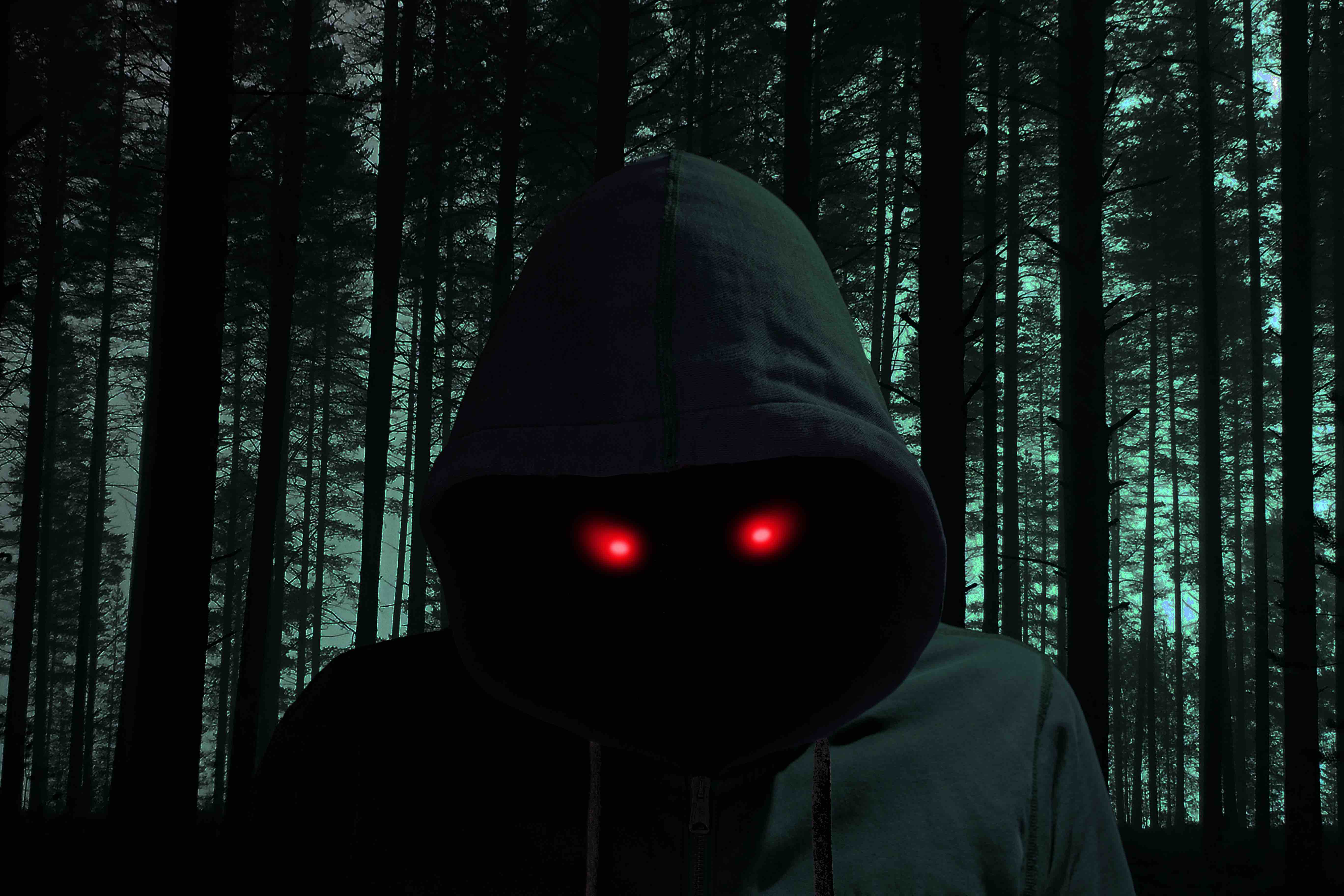
Skinwalkers, also known as “yee naaldlooshii” in Navajo culture, are enigmatic and fearsome creatures deeply rooted in Native American folklore. These shapeshifting beings are said to possess the ability to transform into different animals and bring both fascination and trepidation to those who hear their stories. In this article, we explore 16 captivating facts about Skinwalkers, unraveling the legends, abilities, and mysteries that surround these elusive entities.
Navajo Folklore
Skinwalkers hold a significant place in Navajo folklore, representing a dark aspect of the spiritual world. They are believed to be individuals who have gained supernatural powers through forbidden rituals, enabling them to transform into animals at will.
Shape-Shifting Abilities
One of the most intriguing aspects of Skinwalkers is their alleged ability to shape-shift into different animals. According to legends, they can assume the form of creatures such as coyotes, wolves, bears, or owls. This power grants them unparalleled stealth and the ability to move unnoticed among their surroundings.
Witchcraft and Taboo Practices
In Navajo culture, becoming a Skinwalker is considered taboo. It is believed that these individuals have resorted to practicing witchcraft and dark rituals, including acts of grave desecration and consuming human flesh. Such practices are said to grant them the ability to transform into animals.
Malevolent Intentions
Skinwalkers are often associated with malevolent intentions, seeking to cause harm, spread fear, and sow chaos among humans and animals alike. They are believed to be driven by envy, revenge, or other negative emotions, using their powers to afflict harm upon others.
Shapeshifting Techniques
The knowledge of shapeshifting techniques is said to be passed down through generations within Skinwalker clans or covens. It is believed that these secrets are guarded closely and shared only among those initiated into the dark arts.
Protection Measures
Navajo tradition offers various protective measures against Skinwalkers. These include using white ash, creating “protection bundles” or amulets, and uttering prayers or chants to safeguard against their malevolent powers.
Eerie Howls
Legend has it that Skinwalkers emit eerie howls, mimicking the calls of animals they transform into. These haunting vocalizations are often considered a warning sign of their presence, sending shivers down the spines of those who hear them.
Red Eyes

One notable characteristic associated with Skinwalkers is their glowing red or yellow eyes, which are said to pierce through the darkness of the night. Witnesses of supposed Skinwalker encounters often report the unnerving gaze of these mythical beings.
Animal Communication
Skinwalkers are said to possess a deep connection with animals, enabling them to communicate with them in ways that go beyond conventional human understanding. This connection allows them to gather information, seek companionship, and potentially control or manipulate certain creatures.
Nighttime Activities
Skinwalkers are often associated with nighttime activities, as darkness provides them with the perfect cover for their supernatural deeds. Many Navajo people avoid traveling at night or venturing into areas where Skinwalker encounters are rumored to occur.
Vulnerability to Bullets
According to Navajo tradition, Skinwalkers can be vulnerable to certain protective measures. Some believe that bullets dipped in white ash or blessed by spiritual leaders have the power to injure or repel these supernatural beings.
Shroud of Fear
The tales of Skinwalkers have instilled a profound sense of fear and respect among many Native American communities. The belief in these creatures continues to shape the cultural landscape and influences how people interact with the wilderness and the supernatural.
Cultural Sensitivity
Due to the cultural significance and sensitivity surrounding the topic of Skinwalkers, it is essential to approach discussions with respect and sensitivity toward Navajo traditions and beliefs. Sharing stories should be done with a deep appreciation for the cultural context and the communities to which these legends belong.
Similar Legends Worldwide
While Skinwalkers are primarily associated with Navajo culture, similar legends of shapeshifting entities exist in other cultures around the world. These tales highlight the universal fascination with creatures that can transcend their natural forms.
Paranormal Investigations

The mysterious nature of Skinwalkers has drawn the interest of paranormal investigators and enthusiasts. Numerous accounts, alleged sightings, and investigations have been conducted in an attempt to capture evidence of these elusive beings, often fueling further intrigue and speculation.
Folklore or Reality
The existence of Skinwalkers remains a subject of debate. While skeptics view them as folklore and mythical legends, believers insist on their real presence and share personal experiences that seem to defy rational explanations. The debate continues to captivate the imagination of those interested in the supernatural.
Conclusion
In conclusion, Skinwalkers continues to captivate our imagination with their tales of transformation and supernatural abilities. Rooted in Navajo culture, these shapeshifting beings symbolize both fear and respect. As we explore the legends and mysteries surrounding Skinwalkers, let us approach the topic with cultural sensitivity, recognizing the significance of these stories within Native American traditions.
Frequently Asked Questions (FAQs)
Are Skinwalkers exclusive to Navajo folklore?
Skinwalkers are primarily associated with Navajo folklore, but similar shapeshifting legends exist in other Native American cultures and various mythologies worldwide.
Can anyone become a Skinwalker?
Becoming a Skinwalker is believed to involve dark rituals and practices. It is considered taboo within Navajo culture, and those who engage in such activities are often viewed with fear and disdain.
Are there any reported encounters with Skinwalkers?
Numerous accounts of encounters with Skinwalkers have been shared, but their validity remains a subject of debate. These stories are deeply rooted in personal experiences and cultural beliefs.
Can Skinwalkers be killed?
Traditional Navajo beliefs suggest that Skinwalkers can be injured or repelled through certain protective measures, such as using white ash or blessed bullets. However, the extent of their vulnerability and the effectiveness of these measures remains uncertain.
Are Skinwalkers considered evil?
Skinwalkers are often associated with malevolent intentions, bringing harm and chaos. However, it’s important to note that perceptions may vary, and different interpretations exist within Navajo and other Native American cultures.
Was this page helpful?
Our commitment to delivering trustworthy and engaging content is at the heart of what we do. Each fact on our site is contributed by real users like you, bringing a wealth of diverse insights and information. To ensure the highest standards of accuracy and reliability, our dedicated editors meticulously review each submission. This process guarantees that the facts we share are not only fascinating but also credible. Trust in our commitment to quality and authenticity as you explore and learn with us.
